Posted on June 21st, 2010 by Jaimie Schock
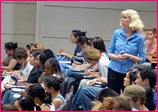 The UCI Chemistry Outreach Program was developed to address the issue of declining opportunities to learn chemistry. In the program, a graduate student or postdoctoral coordinator sends teams of graduate and undergraduate student volunteers to Orange County schools to perform demonstrations and talk about chemistry. The coordinator contacts the high schools, develops the demonstrations, recruits and trains the volunteers, and supplies the volunteers with materials needed for the demonstrations.
The UCI Chemistry Outreach Program was developed to address the issue of declining opportunities to learn chemistry. In the program, a graduate student or postdoctoral coordinator sends teams of graduate and undergraduate student volunteers to Orange County schools to perform demonstrations and talk about chemistry. The coordinator contacts the high schools, develops the demonstrations, recruits and trains the volunteers, and supplies the volunteers with materials needed for the demonstrations.
Read More
Filed under: For Teachers, Grades 6-8, Grades 9-12, Grades K-5, K-12 Outreach Programs | Comments Off on Outreach: University of California-Irvine Chemistry
Tags: Class Activities, Outreach, University outreach
Posted on May 3rd, 2010 by ASEE
 Using a plasma ball or lightning globe, students in grades 3-5 test various objects to see if they pull the electric current generated by the globe to them. Students then explore how the globe excited electrons inside the fluorescent bulbs to make them light.
Using a plasma ball or lightning globe, students in grades 3-5 test various objects to see if they pull the electric current generated by the globe to them. Students then explore how the globe excited electrons inside the fluorescent bulbs to make them light.
Read More
Filed under: Class Activities, Grades K-5, Grades K-5, Lesson Plans | Comments Off on Lesson Plan: Plasma Globes and Electricity
Tags: Class Activities, Curriculum, Grades 3-5, Lesson Plan, Plasma Physics
Posted on April 12th, 2010 by ASEE
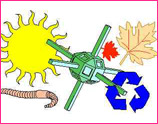 The Hands-On Technology Program Website, sponsored by Galaxy Networks, Inc., provides science experiments and other hands-on activities. Activities are designed so that children can do them using every day, inexpensive materials. Much of the material is designed to be photocopied and used directly in class, while other items includes teacher’s notes and materials lists.
The Hands-On Technology Program Website, sponsored by Galaxy Networks, Inc., provides science experiments and other hands-on activities. Activities are designed so that children can do them using every day, inexpensive materials. Much of the material is designed to be photocopied and used directly in class, while other items includes teacher’s notes and materials lists.
Read More
Filed under: Web Resources | Comments Off on Website: Hands-On Tech Program, K-8.
Tags: Class Activities, Web Resources
Posted on April 4th, 2010 by Jaimie Schock
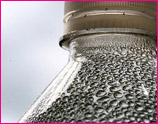 This activity for grades 6-8 provides students with the opportunity to create a food package for a specific food. The students have three components to focus on in the design of their food package. The package will have to keep the food clean, protect or aid in the physical and chemical changes that can take place in the food, and identify the food appealingly.
This activity for grades 6-8 provides students with the opportunity to create a food package for a specific food. The students have three components to focus on in the design of their food package. The package will have to keep the food clean, protect or aid in the physical and chemical changes that can take place in the food, and identify the food appealingly.
Read More
Filed under: Class Activities, Grades 6-8, Grades 6-8, Lesson Plans | 2 Comments »
Tags: Class Activities, Curriculum, Packaging Engineering
Posted on March 29th, 2010 by ASEE
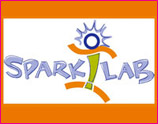 Spark!Lab is a hands-on invention activity center at the Smithsonian’s National Museum of American History in Washington, DC,. The fun activities incorporate history, science, engineering, technology, and art to help kids and families learn about the history and process of invention. Young visitors can play games, conduct science experiments, explore inventors’ notebooks, and even invent! Lab bench experiments are offered at 11:00 a.m., 12:00 p.m., 1:00 p.m., 2:00 p.m., and 3:00 p.m.
Spark!Lab is a hands-on invention activity center at the Smithsonian’s National Museum of American History in Washington, DC,. The fun activities incorporate history, science, engineering, technology, and art to help kids and families learn about the history and process of invention. Young visitors can play games, conduct science experiments, explore inventors’ notebooks, and even invent! Lab bench experiments are offered at 11:00 a.m., 12:00 p.m., 1:00 p.m., 2:00 p.m., and 3:00 p.m.
Read More
Filed under: K-12 Outreach Programs | Comments Off on Smithsonian’s Spark!Lab for Inventors. Washington, DC
Tags: Class Activities, Ideas & Inventions, Museums, Programs for Families, Smithsonian Institution, Web Resources
Posted on March 29th, 2010 by Jaimie Schock
 The Learning Roomba educational toolkit attempts to address robotics usability issues by keeping total costs down while making the tools as easy to use as possible. This toolkit is a collection of resources and tools to facilitate teaching robotics to pre-college students. Through these resources, students can learn about science, math, and engineering topics in a fun and exciting way.
The Learning Roomba educational toolkit attempts to address robotics usability issues by keeping total costs down while making the tools as easy to use as possible. This toolkit is a collection of resources and tools to facilitate teaching robotics to pre-college students. Through these resources, students can learn about science, math, and engineering topics in a fun and exciting way.
Read More
Filed under: Class Activities, Grades 6-8, Grades 6-8, Grades 9-12, Grades 9-12, Lesson Plans | Comments Off on Curriculum: Learning Roomba
Tags: Building robots, Class Activities, Curriculum, Lesson Plan, Robotics, Technology for Learning
Posted on March 29th, 2010 by Jaimie Schock
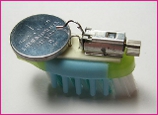 BristleBots are one variety of the popular vibrobot, a simple category of robot controlled by a single vibrating motor. This BristleBot is made from a toothbrush and a few low-cost materials and can easily be modified for additional challenge.
BristleBots are one variety of the popular vibrobot, a simple category of robot controlled by a single vibrating motor. This BristleBot is made from a toothbrush and a few low-cost materials and can easily be modified for additional challenge.
Read More
Filed under: Class Activities, Grades 6-8, Grades 9-12, Grades K-5 | 1 Comment »
Tags: Building robots, Class Activities, DIY, Lesson Plan, Robotics
Posted on March 22nd, 2010 by Jaimie Schock
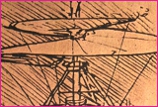 Across three or more class periods, students in grades 4-8 combine their own ideas with the elements of machines to imagine and design inventions to solve specific challenges. Using a variety of materials, they can create small working models of their inventions to test and improve them.
Across three or more class periods, students in grades 4-8 combine their own ideas with the elements of machines to imagine and design inventions to solve specific challenges. Using a variety of materials, they can create small working models of their inventions to test and improve them.
Read More
Filed under: Class Activities, Grades 6-8, Grades K-5 | Comments Off on Activity: Be Inventive!
Tags: Class Activities, Da Vinci, Grades 4 and 5, Grades 6-8
Posted on March 22nd, 2010 by Jaimie Schock
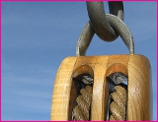 In this activity for grades 6-8, students gain first-hand experience with the mechanical advantage of pulleys. Students are given the challenge of helping save a whale by moving it from an aquarium back to its natural habitat into the ocean. They set up different pulley systems, compare the theoretical and actual mechanical advantage of each and discuss their recommendations as a class.
In this activity for grades 6-8, students gain first-hand experience with the mechanical advantage of pulleys. Students are given the challenge of helping save a whale by moving it from an aquarium back to its natural habitat into the ocean. They set up different pulley systems, compare the theoretical and actual mechanical advantage of each and discuss their recommendations as a class.
Read More
Filed under: Class Activities, Grades 6-8, Grades 6-8, Lesson Plans | Comments Off on Lesson: Lift and Pull
Tags: Class Activities, Lesson Plan, Mechanical engineering, Physical Science, Physics, Science Lesson Plans
 The UCI Chemistry Outreach Program was developed to address the issue of declining opportunities to learn chemistry. In the program, a graduate student or postdoctoral coordinator sends teams of graduate and undergraduate student volunteers to Orange County schools to perform demonstrations and talk about chemistry. The coordinator contacts the high schools, develops the demonstrations, recruits and trains the volunteers, and supplies the volunteers with materials needed for the demonstrations.
The UCI Chemistry Outreach Program was developed to address the issue of declining opportunities to learn chemistry. In the program, a graduate student or postdoctoral coordinator sends teams of graduate and undergraduate student volunteers to Orange County schools to perform demonstrations and talk about chemistry. The coordinator contacts the high schools, develops the demonstrations, recruits and trains the volunteers, and supplies the volunteers with materials needed for the demonstrations.








 Using a plasma ball or lightning globe, students in grades 3-5 test various objects to see if they pull the electric current generated by the globe to them. Students then explore how the globe excited electrons inside the fluorescent bulbs to make them light.
Using a plasma ball or lightning globe, students in grades 3-5 test various objects to see if they pull the electric current generated by the globe to them. Students then explore how the globe excited electrons inside the fluorescent bulbs to make them light. The Hands-On Technology Program Website, sponsored by Galaxy Networks, Inc., provides science experiments and other hands-on activities. Activities are designed so that children can do them using every day, inexpensive materials. Much of the material is designed to be photocopied and used directly in class, while other items includes teacher’s notes and materials lists.
The Hands-On Technology Program Website, sponsored by Galaxy Networks, Inc., provides science experiments and other hands-on activities. Activities are designed so that children can do them using every day, inexpensive materials. Much of the material is designed to be photocopied and used directly in class, while other items includes teacher’s notes and materials lists. This activity for grades 6-8 provides students with the opportunity to create a food package for a specific food. The students have three components to focus on in the design of their food package. The package will have to keep the food clean, protect or aid in the physical and chemical changes that can take place in the food, and identify the food appealingly.
This activity for grades 6-8 provides students with the opportunity to create a food package for a specific food. The students have three components to focus on in the design of their food package. The package will have to keep the food clean, protect or aid in the physical and chemical changes that can take place in the food, and identify the food appealingly. Spark!Lab is a hands-on invention activity center at the Smithsonian’s National Museum of American History in Washington, DC,. The fun activities incorporate history, science, engineering, technology, and art to help kids and families learn about the history and process of invention. Young visitors can play games, conduct science experiments, explore inventors’ notebooks, and even invent! Lab bench experiments are offered at 11:00 a.m., 12:00 p.m., 1:00 p.m., 2:00 p.m., and 3:00 p.m.
Spark!Lab is a hands-on invention activity center at the Smithsonian’s National Museum of American History in Washington, DC,. The fun activities incorporate history, science, engineering, technology, and art to help kids and families learn about the history and process of invention. Young visitors can play games, conduct science experiments, explore inventors’ notebooks, and even invent! Lab bench experiments are offered at 11:00 a.m., 12:00 p.m., 1:00 p.m., 2:00 p.m., and 3:00 p.m. The Learning Roomba educational toolkit attempts to address robotics usability issues by keeping total costs down while making the tools as easy to use as possible. This toolkit is a collection of resources and tools to facilitate teaching robotics to pre-college students. Through these resources, students can learn about science, math, and engineering topics in a fun and exciting way.
The Learning Roomba educational toolkit attempts to address robotics usability issues by keeping total costs down while making the tools as easy to use as possible. This toolkit is a collection of resources and tools to facilitate teaching robotics to pre-college students. Through these resources, students can learn about science, math, and engineering topics in a fun and exciting way. BristleBots are one variety of the popular vibrobot, a simple category of robot controlled by a single vibrating motor. This BristleBot is made from a toothbrush and a few low-cost materials and can easily be modified for additional challenge.
BristleBots are one variety of the popular vibrobot, a simple category of robot controlled by a single vibrating motor. This BristleBot is made from a toothbrush and a few low-cost materials and can easily be modified for additional challenge. Across three or more class periods, students in grades 4-8 combine their own ideas with the elements of machines to imagine and design inventions to solve specific challenges. Using a variety of materials, they can create small working models of their inventions to test and improve them.
Across three or more class periods, students in grades 4-8 combine their own ideas with the elements of machines to imagine and design inventions to solve specific challenges. Using a variety of materials, they can create small working models of their inventions to test and improve them. In this activity for grades 6-8, students gain first-hand experience with the mechanical advantage of pulleys. Students are given the challenge of helping save a whale by moving it from an aquarium back to its natural habitat into the ocean. They set up different pulley systems, compare the theoretical and actual mechanical advantage of each and discuss their recommendations as a class.
In this activity for grades 6-8, students gain first-hand experience with the mechanical advantage of pulleys. Students are given the challenge of helping save a whale by moving it from an aquarium back to its natural habitat into the ocean. They set up different pulley systems, compare the theoretical and actual mechanical advantage of each and discuss their recommendations as a class.